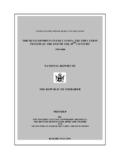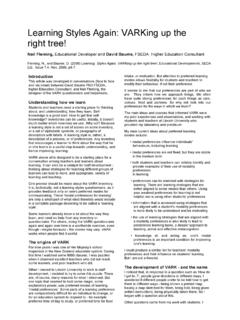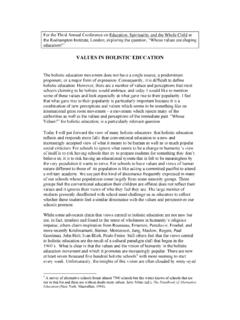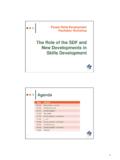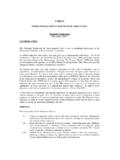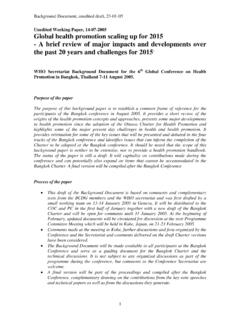Transcription of The new revenue recognition standard power and …
1 September 2014. IFRS. Developments The new revenue recognition for power and standard power and utilities Utilities What you need to know Application of the requirements of the new revenue recognition standard will require P&U entities to use a greater degree of judgement. The key issues for the power and utilities entities include determining how the standard applies when identifying performance obligations, estimating variable consideration and accounting for contract modifications. power and utilities entities may have to change their processes and information systems to capture information they need to apply the standard and to make the required disclosures. The standard is applicable for annual reporting periods commencing on or after 1 January 2017, with early adoption permitted. Highlights power and utilities (P&U) entities may need to change certain revenue recognition practices as a result of IFRS 15 revenue from Contracts with Customers, the new revenue recognition standard that was jointly issued by the International Accounting standards Board (the IASB) and the Financial Accounting standards Board (the FASB) (collectively, the Boards).
2 The new standard will supersede virtually all revenue recognition requirements in IFRS and US GAAP. Entities that elect to adopt IFRS 14 Regulatory Deferral Accounts will continue to recognise revenue in accordance with that standard . IFRS 15 provides accounting requirements for all revenue arising from contracts with customers and affects all entities that enter into contracts to provide goods or services to their customers (unless the contracts are in the scope of other IFRS requirements, such as IAS 17 Leases). The standard also provides a model for the measurement and recognition of gains and losses on the sale of certain non-financial assets, such as property, plant and equipment (PP&E) and intangible assets. Our Applying IFRS, A closer look at the new revenue recognition standard (June 2014)1, provides an in-depth discussion of IFRS 15.
3 This publication summarises the key implications of the standard for P&U entities. P&U entities also may want to monitor the discussions of both the Boards' Joint Transition Resource Group for revenue recognition (TRG) and the task force formed by the American Institute of Certified Public Accountants (AICPA) to focus on P&U. issues. The Boards created the TRG to help them determine whether more application guidance or education is needed; the TRG will not make formal recommendations to the Boards or issue guidance. The AICPA's P&U industry task force is one of 16. industry task forces created by the AICPA to help develop a new accounting guide on revenue recognition and to aid industry stakeholders in implementing the standard . Any views discussed by the TRG or guidance provided by the AICPA are non-authoritative.
4 The views we express in this publication are preliminary. We may identify additional issues as we analyse the standard and entities begin to interpret it, and our views may evolve during that process. Key considerations To apply IFRS 15, entities will need to change the way they evaluate many of their transactions, even if the amounts they report will not change significantly. P&U entities may need to use significant judgement when they identify performance obligations, evaluate contracts with fixed and stepped pricing and account for contract modifications. Identifying performance obligations P&U entities may now For many P&U arrangements ( , take-or-pay contracts, long-term power purchase have to combine a series agreements), entities will have to carefully consider whether the individual units of the of goods and services that good or service delivered are separate performance obligations.
5 For example, a contract may involve a promise to transfer a number of identical units of energy, are substantially the same typically as individual kilowatt-hours (kWh). Under the new standard , a series of and have the same pattern distinct goods or services ( , each kWh) that is transferred consecutively is treated of transfer into a single as a single performance obligation if the distinct goods or services are substantially performance obligation, if the same and would be recognised over time using the same measure of progress. certain criteria are met. Because electricity is generally simultaneously provided and consumed, an electricity contract will likely meet these criteria. P&U entities will also need to carefully consider whether contracts to provide other goods or services meet these criteria.
6 Further, P&U entities must also evaluate whether there are other distinct goods and services in their contracts. For example, an energy contract may include a promise to make capacity available to the customer on demand, provide transmission services or deliver renewable energy emissions credits. The proper identification of the performance obligations in these contracts may be complex, but will be critical because this determination would drive the pattern of revenue recognition . Fixed and stepped-price arrangements P&U entities will need to apply significant judgement when determining the interaction between performance obligations and estimating the stand-alone selling price for fixed and stepped-price arrangements. These types of contracts typically include only one type of good or service ( , a unit of energy, volume of gas, waste services) that are sold in multiple units over a period of time.
7 Entities with these types of contracts should carefully consider the contractual terms and evaluate the reasons for the price changes when identifying the performance obligations and determining how to allocate the transaction price to the performance obligations. These arrangements commonly include aspects of variable consideration which may need to be evaluated further. 1. Available on 2 The new revenue recognition standard power and utilities industry Unlike contracts to deliver electricity, contracts to deliver some commodities may not meet the criteria to be satisfied over time. Therefore, they may not meet the criteria Only in certain cases, will for a single performance obligation comprised of a series of goods or services. For the new standard permit example, an entity might enter into a natural gas sales contract with an industrial an entity to recognise customer that stores the natural gas for later use, rather than immediately consuming revenue for the amount it it.
8 In these situations, entities may identify multiple performance obligations ( , has the right to invoice. each thermal unit). IFRS 15 requires entities to determine the stand-alone selling price for contracts where separate performance obligations exist for each unit of the commodity. However, the standard does not provide any specific application guidance as to how the stand-alone selling prices should be determined. It is unclear whether entities are required to use a current market price or other prices that may be available at the contract inception date, such as a forward price or a calculated value. As a result, additional developments in this area are likely. In certain cases, the new standard permits an entity to recognise revenue for the amount it has the right to invoice, if that amount corresponds to the value it transfers to the customer.
9 If a P&U entity qualifies for this practical expedient, it may be able to recognise revenue in the same manner as is generally done today ( , on an as- invoiced basis). Blend and extend modifications Contract modifications are common in the P&U industry. In many cases, a modification will extend the period of the contract and change the overall pricing. For example, a P&U entity may agree to extend the period of a contract and create a blended price for the remaining units to be delivered over the extended term. Under current IFRS, P&U. entities account for blend and extend modifications on a prospective basis by applying the new contractual blended rate to all remaining units. Under IFRS 15, a P&U entity will generally account for a blend and extend modification prospectively, because the goods or services provided after the modification are distinct from those previously provided under the contract.
10 A P&U entity will only apply a blended rate to the remaining goods and services if the new goods or services are priced above or below the stand-alone selling price, which would indicate that an economic relationship exists between the original and modified contracts. If a P&U. entity determines that the price of the goods or services added in the modification is the stand-alone selling price at the date of modification (which may include adjustments to reflect the circumstances of the particular contract, , reasonable discounts), the modification will be treated as a separate contract and the pattern of revenue recognition will likely differ from current practice. P&U entities may need to update their processes to allow for such analyse of blend and extend modifications. The new revenue recognition standard power and utilities industry 3.










